
Piercing the veil
A new exhibition at Buxton Contemporary finds a rich complexity in the shadowy terrain between life and death.

Maryanne Mungatopi, Tiwi 1966–2003, Purrukuparli and Bima, 2002 earth pigments on paper 55.2 x 74.5 cm. Gift of Colin Golvan QC in memory of the artist through the Australian Government’s Cultural Gifts Program, 2014 © Maryanne Mungatopi / Licensed by Copyright Agency, Australia.
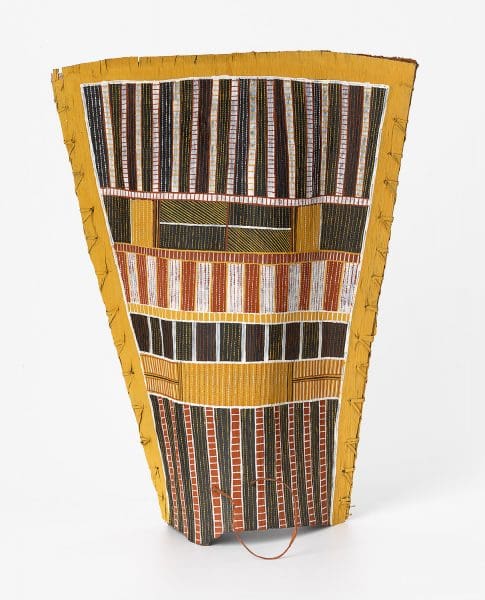
Pedro Wonaeamirri, Tiwi born 1974, Tunga, 2008, earth pigments on Stringybark (Eucalyptus sp.), fibre string 88.0 x 66.5 x 40.5 cm National Gallery of Victoria, Melbourne Purchased, NGV Supporters of Indigenous Art, 2009 © Pedro Wonaeamirri / Licensed by Copyright Agency, Australia.
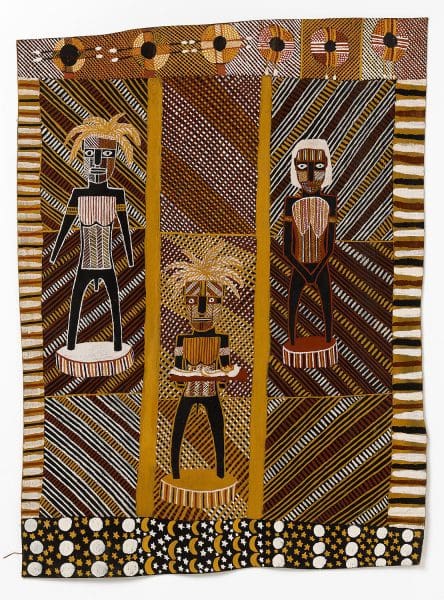
Harold Porkilari, Tiwi c. 1963–2003, Purrukuparli ngirramini, 1992, earth pigments on Stringybark (Eucalyptus sp.) 102.0 x 75.5 cm National Gallery of Victoria Purchased from Admission Funds, 1992 © Harold Porkilari / Licensed by Copyright Agency, Australia.
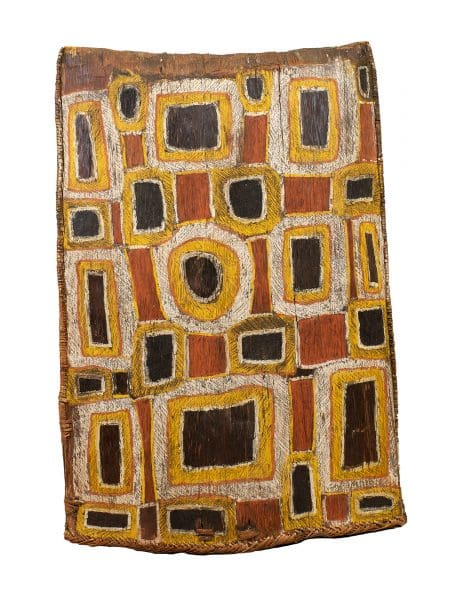
Artist’s name not recorded, Tiwi active 1950s Tunga, Totem places of the woolly butt, 1954 earth pigments on Stringybark (Eucalyptus sp.) 90.0 x 70.0 cm (sight) South Australian Museum, Adelaide Collected by Charles P. Mountford, 27 July 1954 © Courtesy of Jilamara Arts & Crafts Association, Milikapiti.
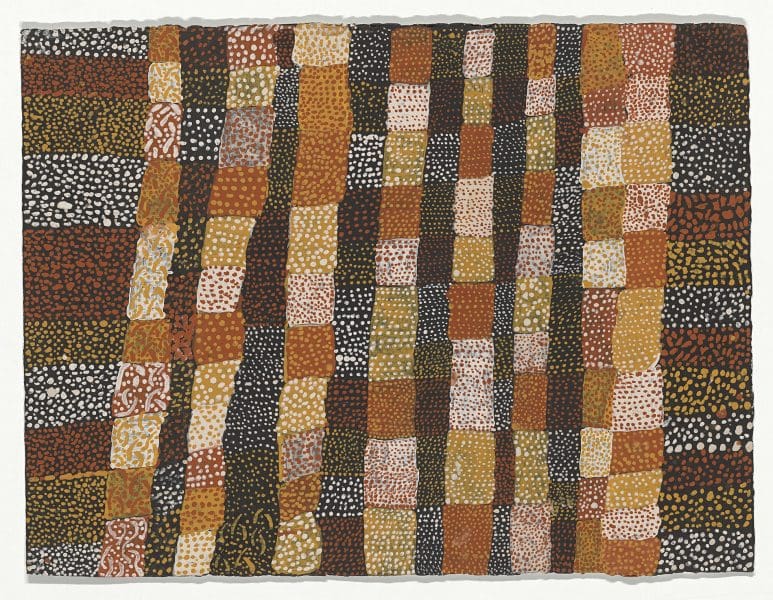
Lillian Kerinauia, Tiwi born 1977, Untitled 2002, earth pigments on paper 56.0 x 76.0 cm Aboriginal & Pacific Art, Sydney © The artist, Aboriginal & Pacific Art, and Ngaruwanajirri Inc.
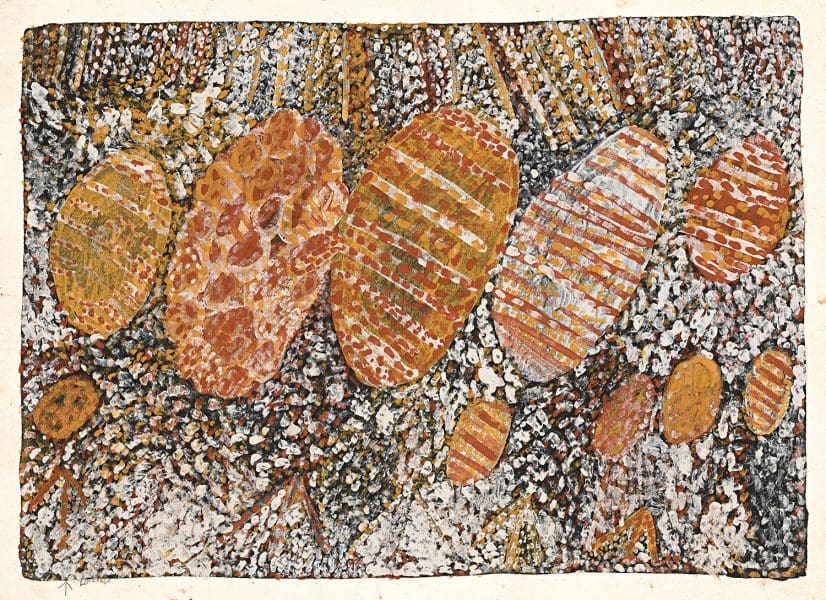
Lorna Kantilla, Tiwi born 1977, Jukwarringa (Mud mussels), 1998 earth pigments on paper 56.0 x 76.0 cm Collection of Ngaruwanajirri Inc., Wurrimiyanga, Bathurst Island, NT © The artist and Ngaruwanajirri Inc.
In the art of master carver Pedro Wonaeamirri, a mixture of yellow, orange and brown markings form a distinctive pattern mirroring the colours and tones of Melville Island, where the artist lives and creates. In the 2008 work Tunga, Wonaeamirri’s intricate painting on a stringybark eucalyptus basket reflects an innate connection with the environment: natural materials are the basis of his practice. This piece also embodies the artistic vitality and reciprocity between people and Country found in TIWI.
Showing at the National Gallery of Victoria (The Ian Potter Centre: NGV Australia), TIWI marks the largest collection of work ever assembled from the Tiwi Islands. Taking place in Melbourne, which has been physically cut off from Country, regions and experiences due to ongoing lockdowns, TIWI opens a space for engaging with First Nations culture in both poetic and practical ways. It reconnects Westernised spaces with culture from across our vast continent.
For curator Judith Ryan AM, the exhibition offers insights into a culture where customs and social life are honoured through vibrant artistic production. “Tiwi artists have always wanted to share their work with people from other backgrounds,” she explains.
Comprised of Melville and Bathurst Islands, the Tiwi Islands are located 80km north of Darwin. This distance from mainland Australia has enabled Tiwi communities to develop a unique perspective in language, ceremonies, and kinship networks. TIWI captures this vitality by exploring the knowledge and customs of the region, rather than diluting Tiwi culture under the umbrella category of ‘First Nations art’. As Ryan acknowledges, “There is no such thing as pan-Aboriginal art. Tiwi culture is completely separate, which is the case for all Aboriginal and Torres Strait Islander art. And yet, Tiwi art is not often exhibited.”
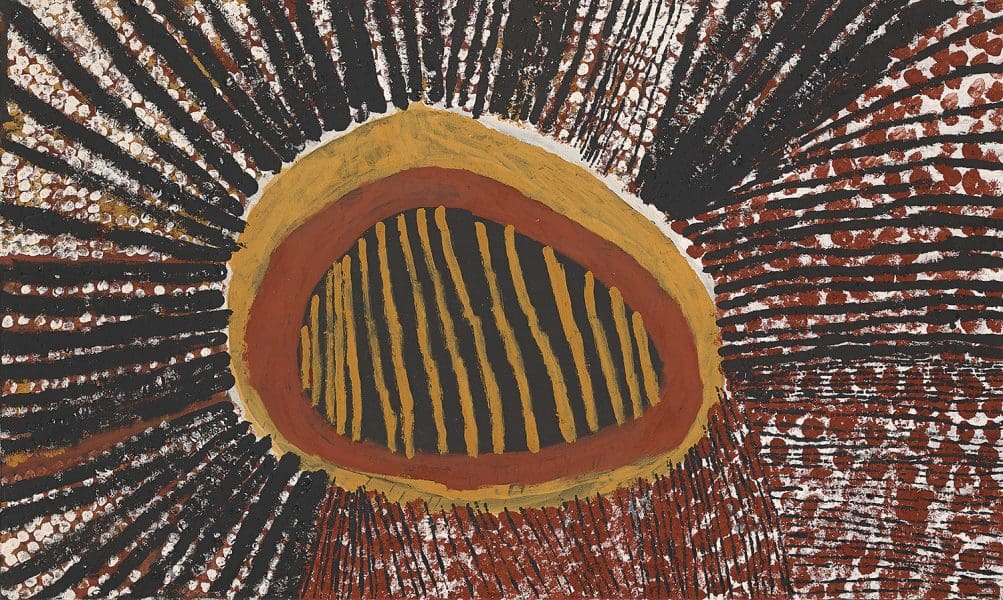
Featuring around 300 works by over 70 artists created from 1911 to the present, TIWI illuminates the wide-reaching cultural force of Tiwi communities. Through bark paintings, printmaking, textiles and ceramics, the dynamic collection reveals rich glimpses of Tiwi life and culture. Such vividness can be found in the new commission Yoyi (Dance), 2020, a moving-image piece involving 25 Tiwi participants from Jilamara Arts and Crafts Association. Shown across four large screens, this powerful work gives a visceral presence to Tiwi people singing and dancing in language on Country.
A distinguishing feature of TIWI is that it escapes a chronological ordering of work. Ryan believes this honours the communities and practices where “art exists in a continuum where old and new are important, and art is both connected to place and to ancestor.” She explains, “We didn’t want a glass case stereotyping; we wanted to jump from past to present, abstraction to figuration, and across media, to be constantly varied.”
In TIWI the gallery is transformed to capture the movement and spirit of Tiwi culture, evoking cultural events such as the pukumani (mourning) and kulama (coming of age) ceremonies. Materially, these ceremonies and cultural moments are shown through art and objects such as utini (poles), jilamara (body painting), kawakawayi (song) and yoyi (dance).
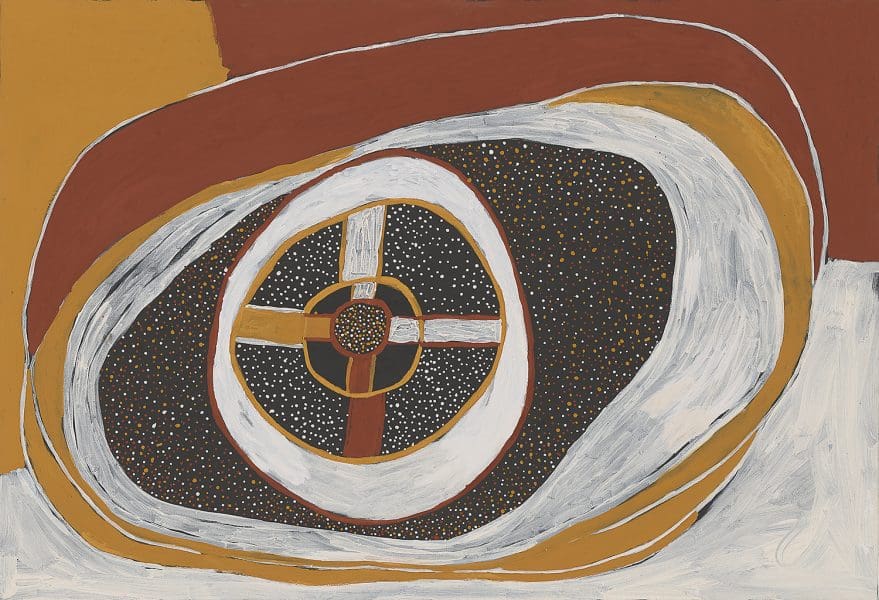
Sharing such cultural practices and artworks in a city centre can shift the urban/regional divide, allowing audiences to see Tiwi culture as part of the complex and multilayered continent we inhabit. This echoes the ideas of First Nations architect and academic Kevin O’Brien, who has positioned Australia as a multifaceted continent whose unique and divergent cultures make up a complex ecosystem. In his vital keynote speech at the 2019 event Our Voices: the DE-Colonial project, held at the University of Sydney, O’Brien dismantled the binaries of country versus city, instead re-conceptualising Australia as one metropolis; an interwoven tapestry of different cultures and language groups. By redistributing the power of capital cities to other areas, this thinking invites people to see the cultural practices and livelihoods of outlying regions and islands as equally valuable as their urban counterparts.
TIWI evocatively reflects this way of seeing Australia, bringing the cultural knowledge of remote island communities to de-centre the Western systems that are generally prioritised in cities like Melbourne/Birrarung-Ga. Ryan reminds me that “there are a lot of Tiwi people who have established themselves in Victoria and have made a great contribution.” The exhibition gives greater visibility to the work Tiwi people have made across the continent, and an understanding of their ways of seeing the world.
While TIWI ultimately shows the power and beauty of First Nations people’s connection to land, this is especially evoked by a large collection of pukumani tutini (poles) by master carvers Declan Apuatimi, Mani Luki, Tommy Mungatopi, Paddy Freddy Puruntatameri, Pedro Wonaeamirri, Leon Puruntatameri, Pius Tipungwuti and Mario Walarmerpui. Assembled to represent a forest, the detailed carvings playfully redirect attention to the significance of Country beyond the limits of the urban, and question how we might reimagine our relationship to place.
TIWI
National Gallery of Victoria — The Ian Potter Centre: NGV Australia
23 November—March 2021
This article was originally published in the November/December 2020 print edition of Art Guide Australia.